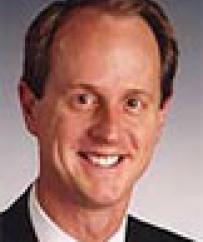The reauthorization of the federal surface transportation bill, expected to pass through Congress this session, is of critical importance to California, home of two of the most congested metropolitan regions in the country. In order to highlight the Northern California perspective, TPR/MIR is pleased to present remarks from the U.S. DOT outreach event held February in L.A. by Bay Area Metropolitan Transportation Commission Executive Director Steve Heminger, who suggests a complete paradigm shift for the upcoming bill.

Steve Heminger
Steve Heminger: The current federal surface transportation program should not be reauthorized; instead we should make a new beginning. If DOT wouldn't mind some graphic advice, I would dump the "re" off your outreach tour because words matter and I don't think reauthorizing what we've got is the path ahead of us. The interstate era, as you all know, lasted about 30 years, from the mid '50s to the mid '80s, and had a clear purpose to construct a national network of grade separated highways. And about that purpose we can say, mission accomplished. The TEA era began with the ISTEA legislation in 1991. That era is now drawing to a close some 20 years later.
While that era had brought us unprecedented flexibility in how we spend federal funds, I would argue that its mission was never clear and the results that have been produced, I'm not sure are all that encouraging either. We have spent about $650 billion nationwide during the TEA era. The condition of our transportation assets such as our bridges, highways, and transit systems, has improved somewhat. If you believe the American Society of Civil Engineers it's gone from a grade of "F" to a grade of "D," not something to write home about but at least it's in the right direction. Just about everything else has gotten worse, measurably, significantly worse, whether it's commuter traffic congestion, greenhouse gas emissions, freight bottlenecks, 35,000-40,000 people a year dying on our highways. That leads to point number two; we need to change what we're doing if we want to achieve different results. In the view of our national commission, the next era in federal surface transportation policy should be performance driven, outcome based, generally mode neutral, and refocused to pursue only those activities that haven genuine national interest. I don't think you can make the case that the current program meets any of those markers.
We need a federal program that is oriented toward reducing the things we don't like: congestion, fatalities, and emissions, and maximizing the values we cherish, such as mobility, safety, and community vitality. As a nation we can set aggressive goals for improving transportation system performance, not just keeping it from getting worse-improving it from today's conditions. We should hold recipients of federal funds accountable for meeting those goals. I'm one of those recipients, but I think we all need to be in this together. A good example of setting a performance-based approach would be a measurable mobility program, which, in California would partner local officials in Sacramento, San Diego, the Bay Area, and Anaheim, in cutting commute times, improving air quality, and, most importantly, keeping those economic engines primed and pumping out good jobs. That's where the job creation is in this country and we ignore our metropolitan regions at our peril.
The last point I want to make, because I'm here not just as a member of a national commission but also a Californian, I think it's fair to ask how would California do under such a performance-based system? The short answer is just fine. In recent years, as I think you all know, we have devised an odd system for measuring success in the federal transportation program. It's called the minimum guarantee. Highway bills are judged a failure unless each state receives back at least 90 percent or more of its trust fund contributions. I suppose the ultimate expression of this thinking would be a transportation bill that would return 100 percent of all gas tax funds to each state where they were collected. But then what would be the purpose of sending the money to Washington in the first place? By contrast, a performance-based approach would focus the dollars and cents where the problems are and where state and local officials could deliver solutions. Now California certainly has no shortage of transportation problems, whether it's traffic congestion or air pollution, we unfortunately lead the nation. But with trend-setting leaders such as my fellow panelists from the Air Resources Board, from CalTrans, from the High Speed Rail Authority, I am confident that we can set the pace in the solution department as well. Thanks very much.
- Log in to post comments



